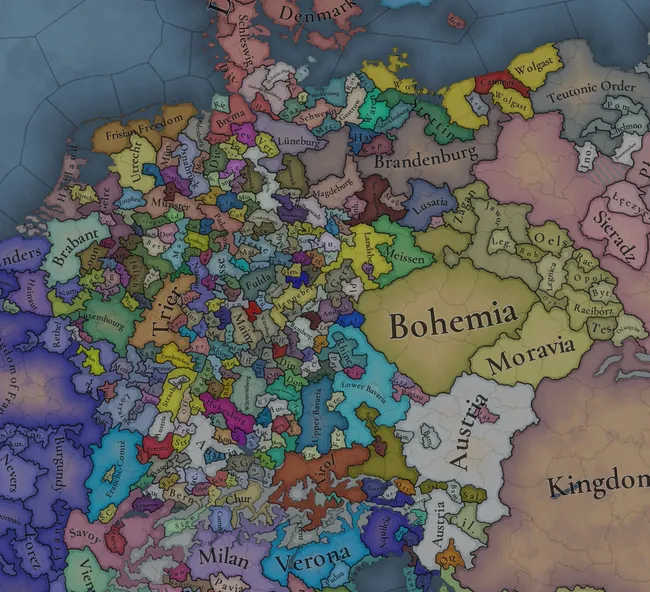The yet-to-be-announced game was accompanied by an image from Paradox Tinto, and considering the genre, you’ll probably need a pretty powerful processor to properly run what you see in the image.
Every few months, Paradox Tinto releases developer diaries and half-finished map images from Project Caesar. The image below could be mockingly described as a Caesar salad, but the game is clearly Europa Universalis 5. The term Caesar salad is somewhat appropriate, though, because what you see on the map looks very complicated at first glance, but it’s a real location and city-states!
It is a picture of the Holy Roman Empire, and Paradox Tinto has put it together in amazing detail! Yes, it wasn’t as cohesive a state as, say, the Kingdom of Hungary, and simulating that will be no easy task. According to Paradox, there are currently 357 (!!!) states in the Holy Roman Empire. In comparison, less than 100 were simulated in Europa Universalis 4. When they tried to simulate our neighbor in more detail before, they cut out the rest of the world, it was so complicated. This was the case with the Voltaire’s Nightmare map in Europa Universalis 4.
Paradox Tinto can make it even more complicated. The Holy Roman Empire will be there, loose among the other countries, and even the dwarf states can be broken up if the territory needs to be divided among the children of the rulers. Paradox is planning something disgustingly detailed from this point of view! But there is a downside: the historical strategy requires a lot of calculations, because all the countries have to be calculated by our PC while we are developing our own. If you also turn on the time acceleration, you’ll need a very powerful processor to keep the game from turning into a slide show.
Europa Universalis 5 hasn’t even been announced yet. It’s being developed for PC and will be released at some point. We can’t wait to see how much it will stretch the machine, although it certainly won’t need an RTX 5090 in terms of graphics cards…

















Leave a Reply